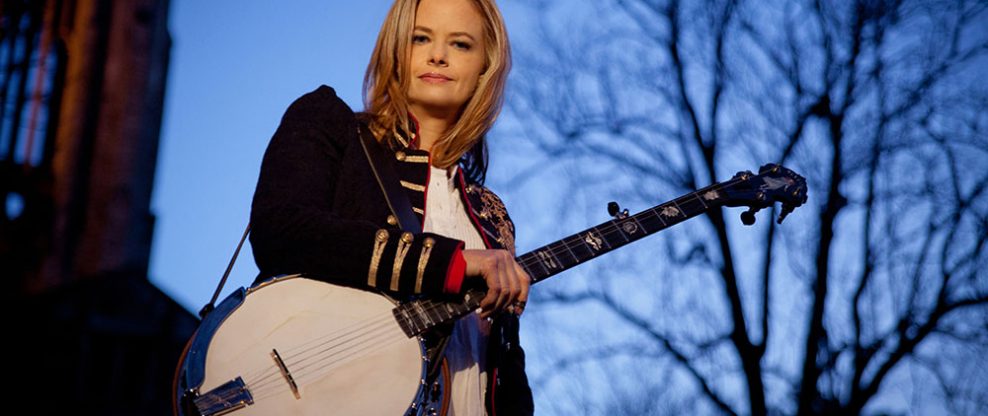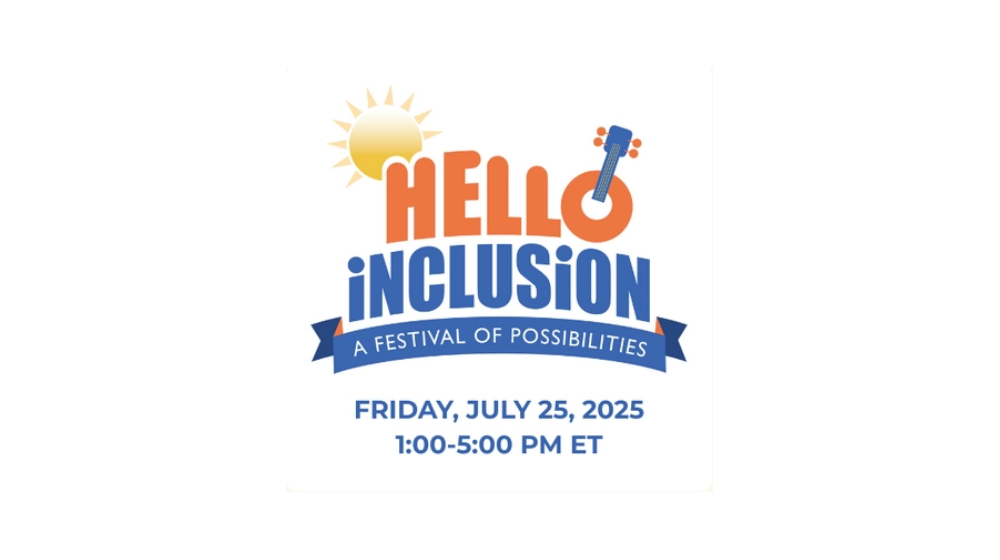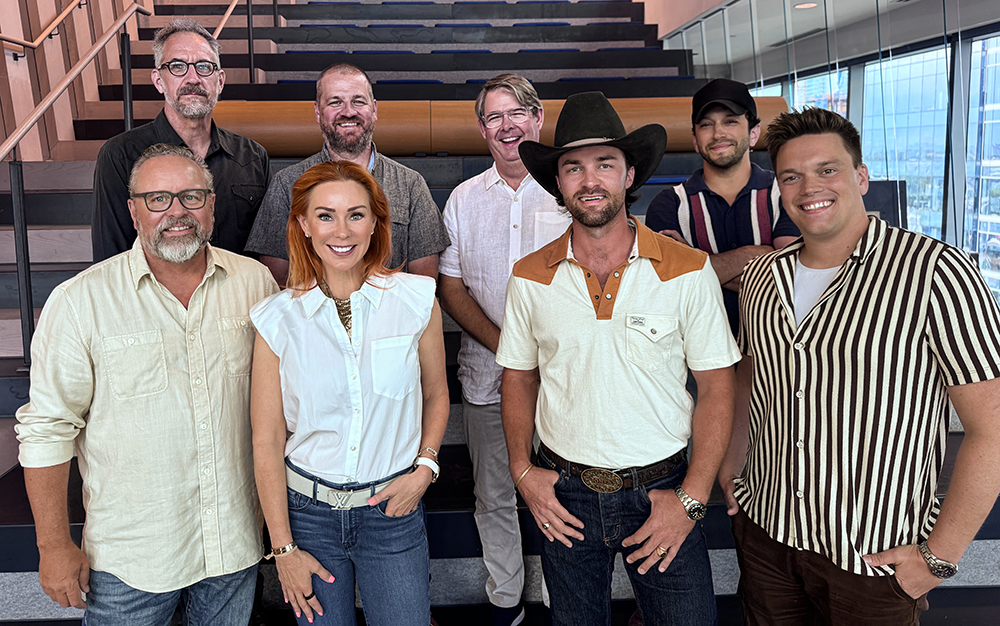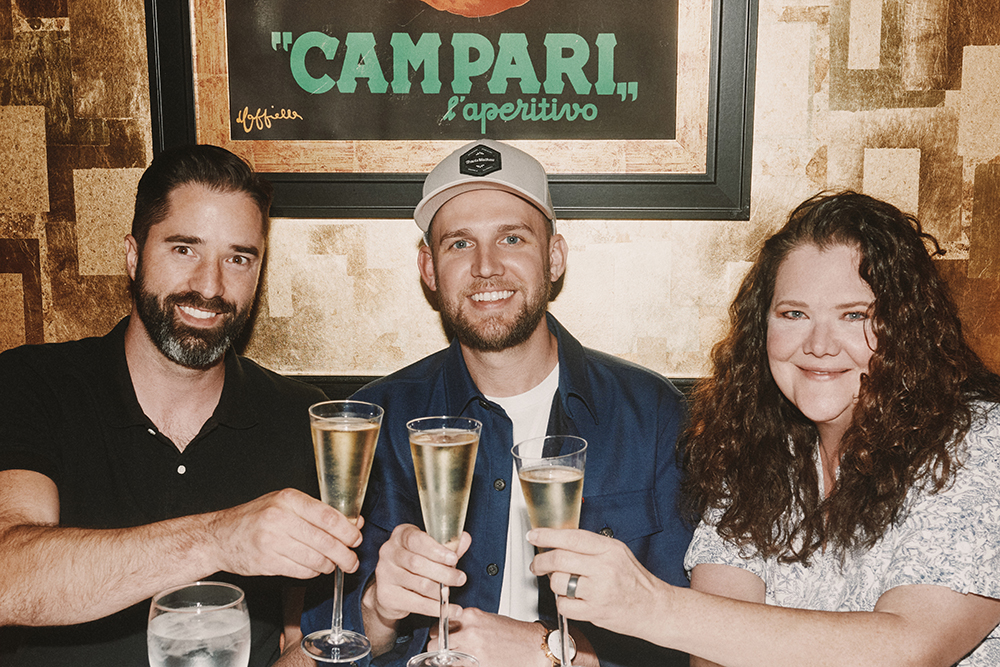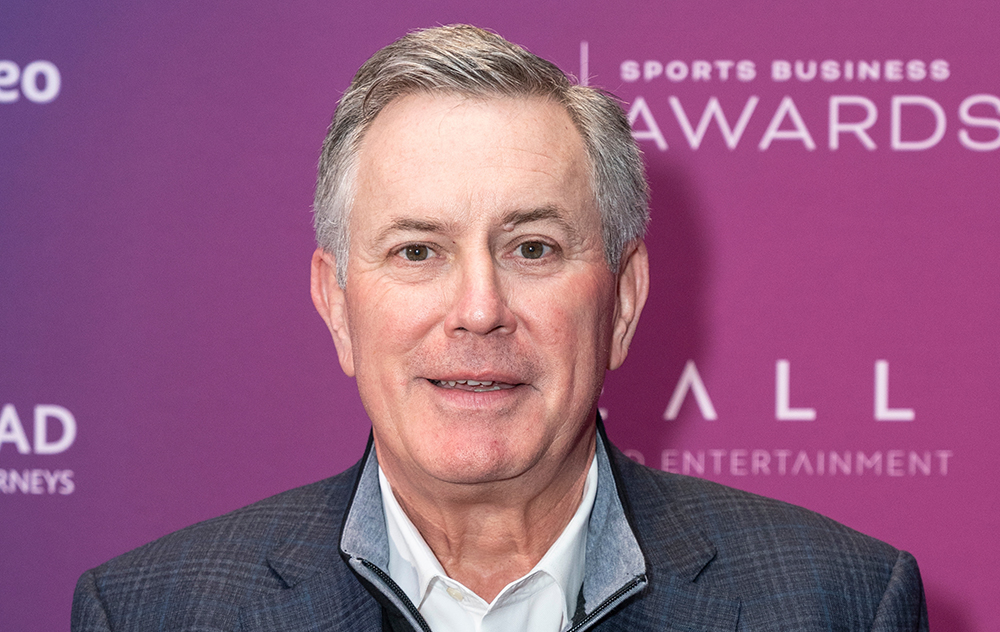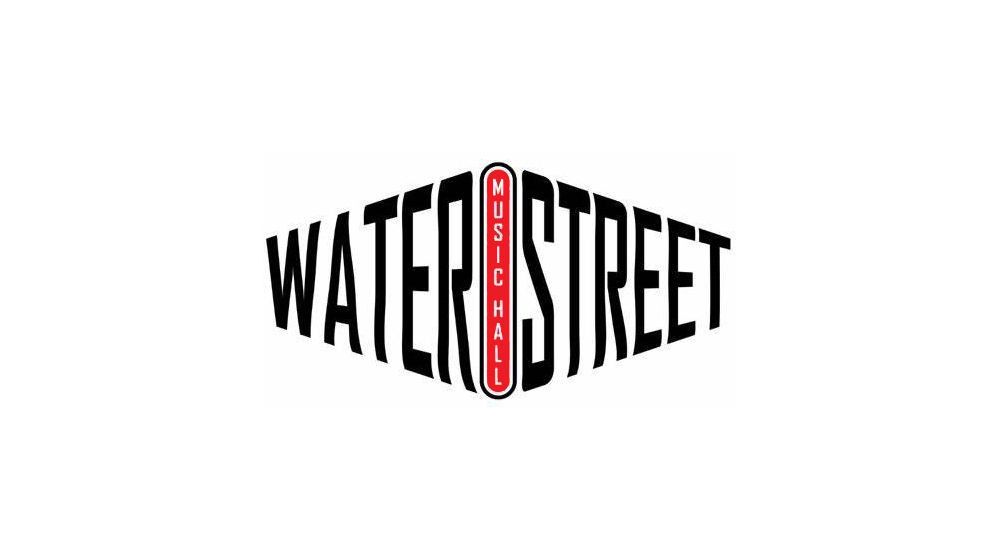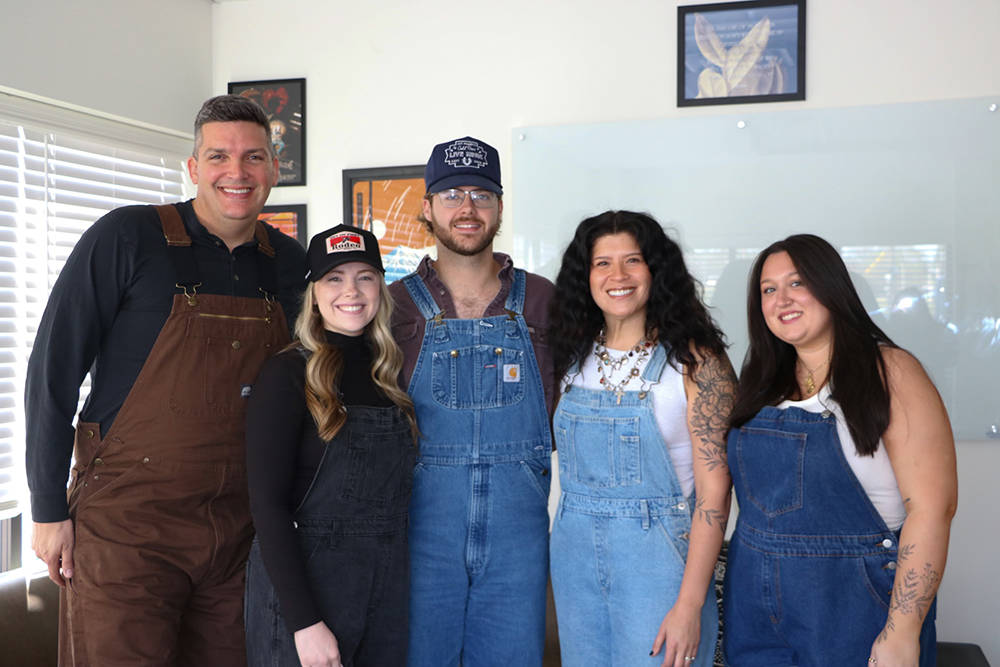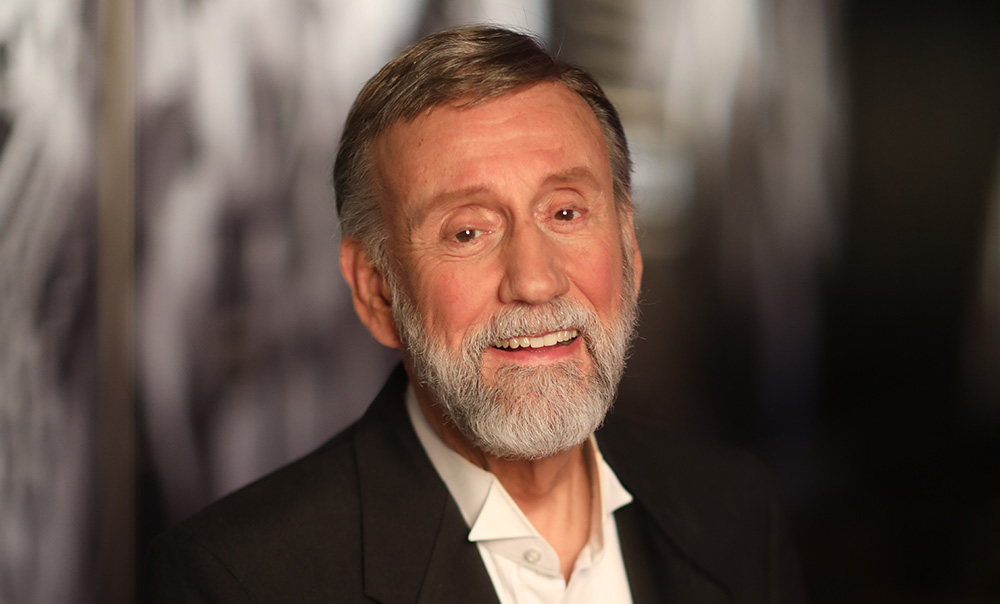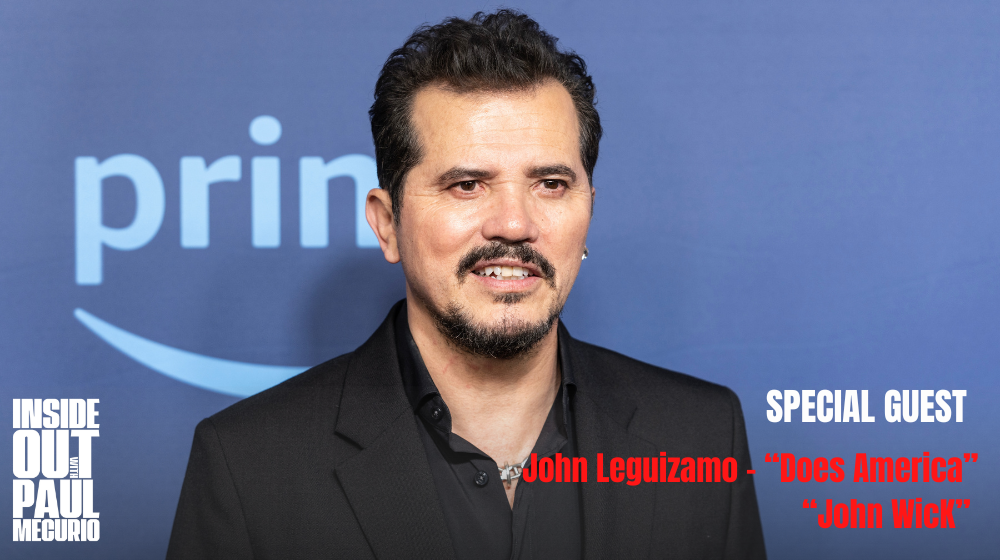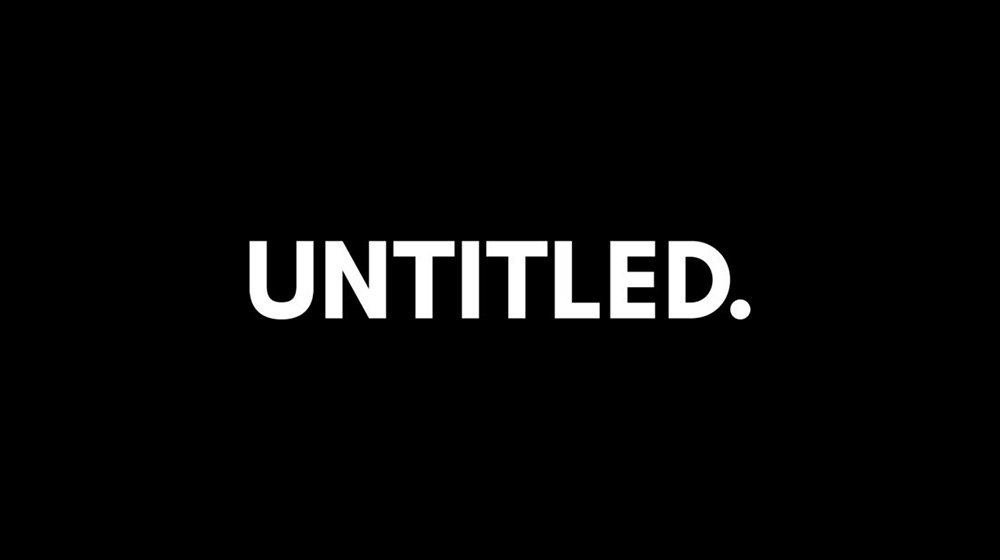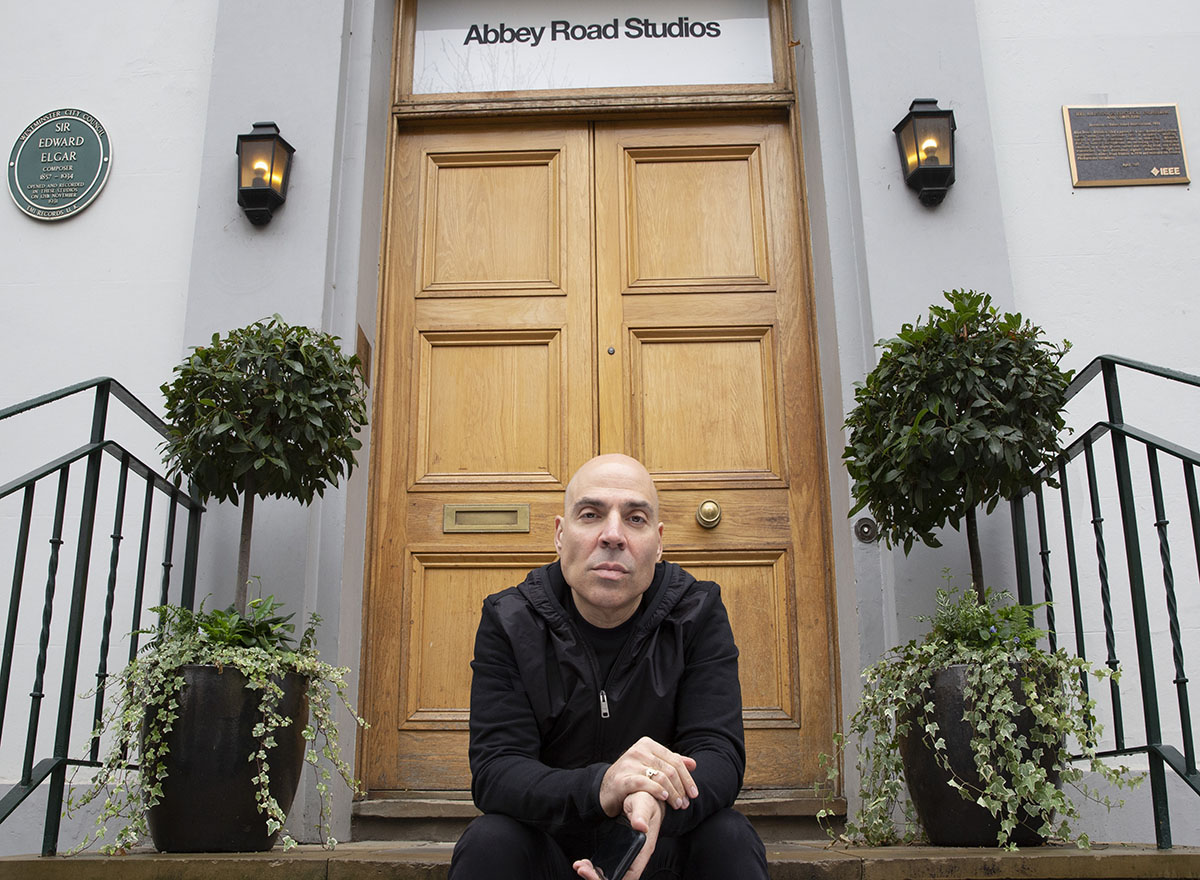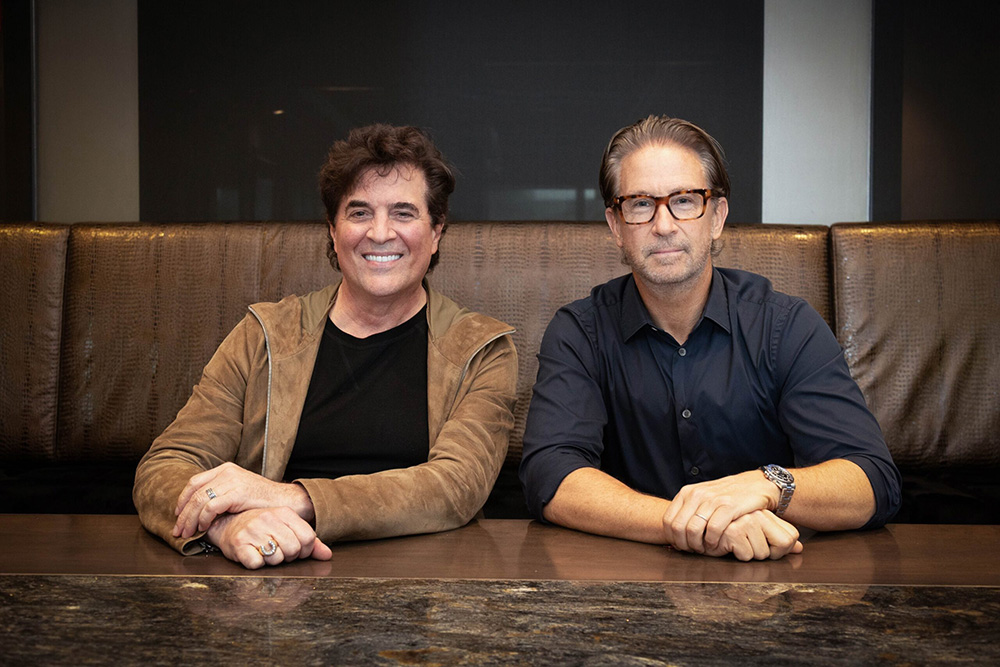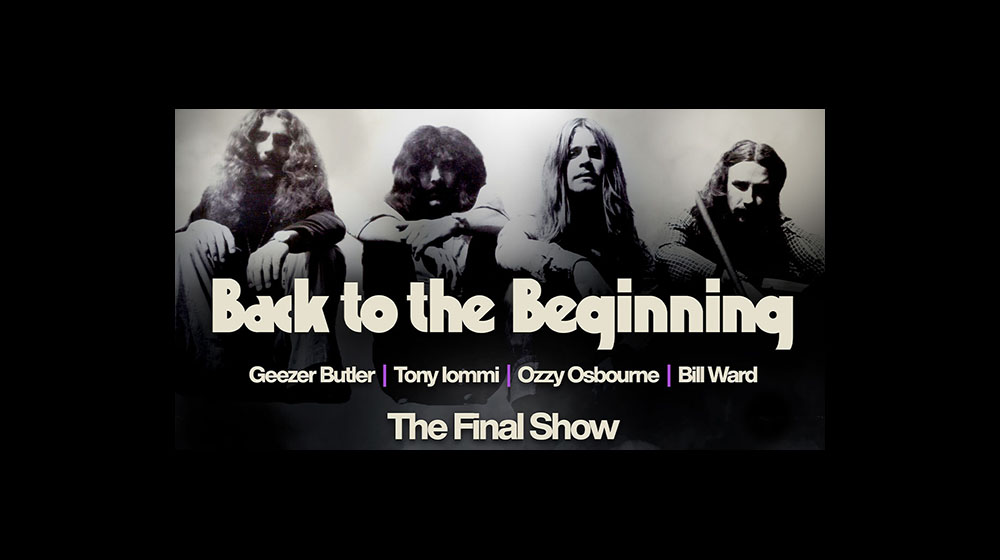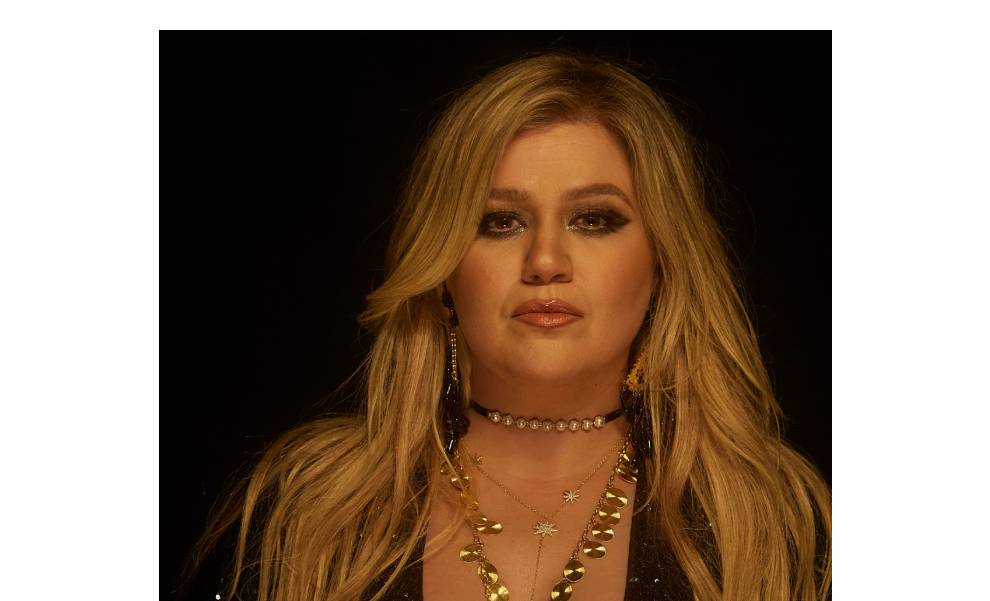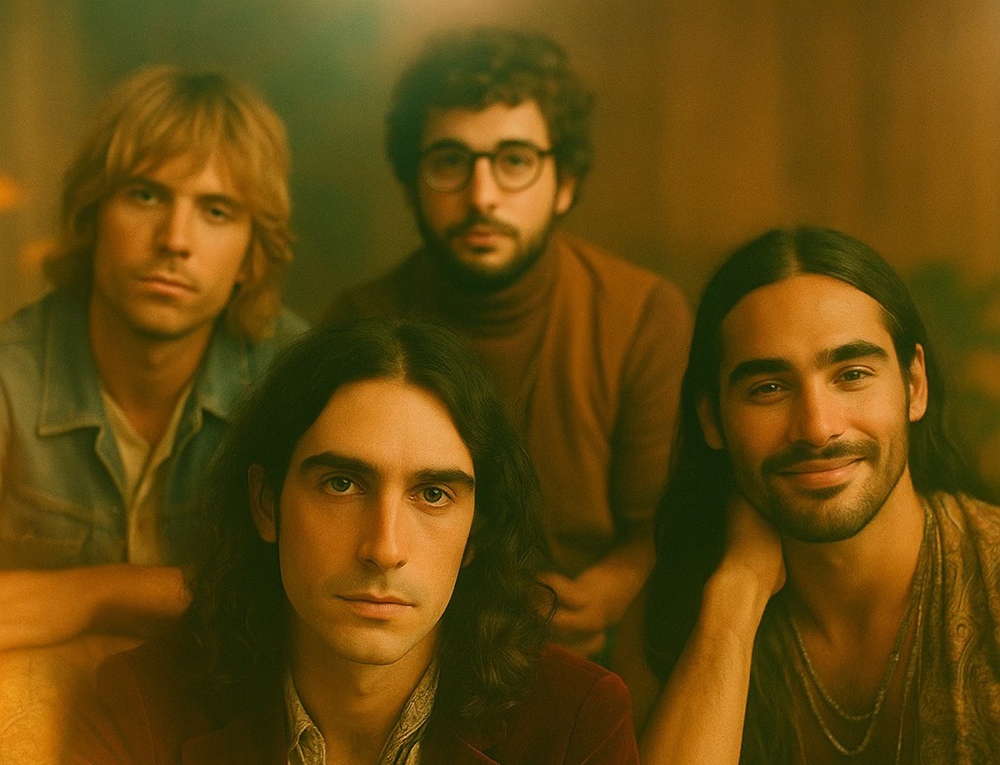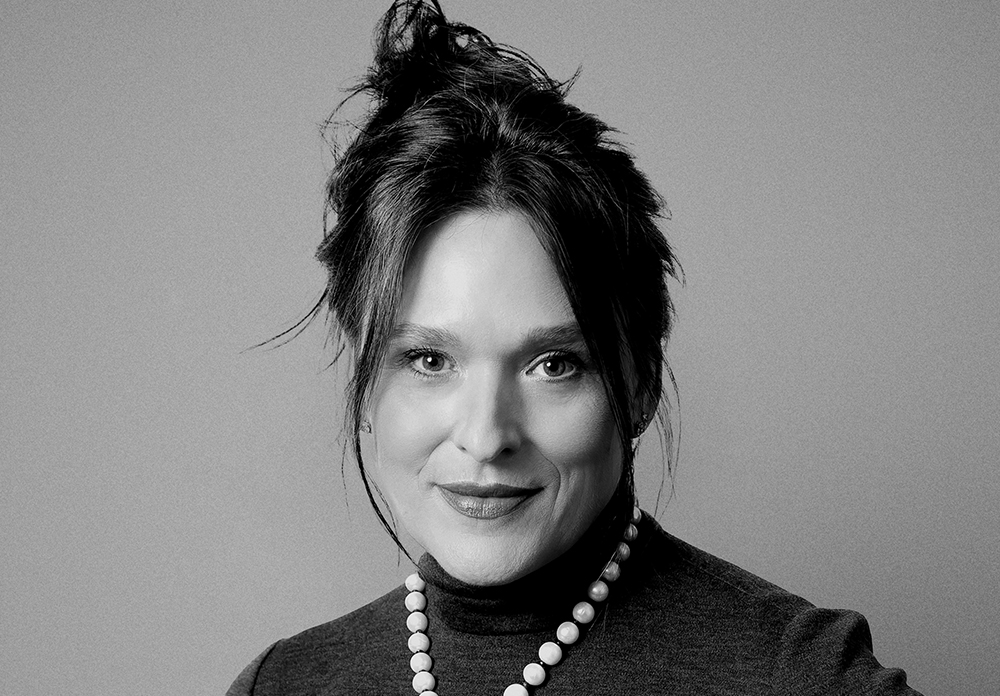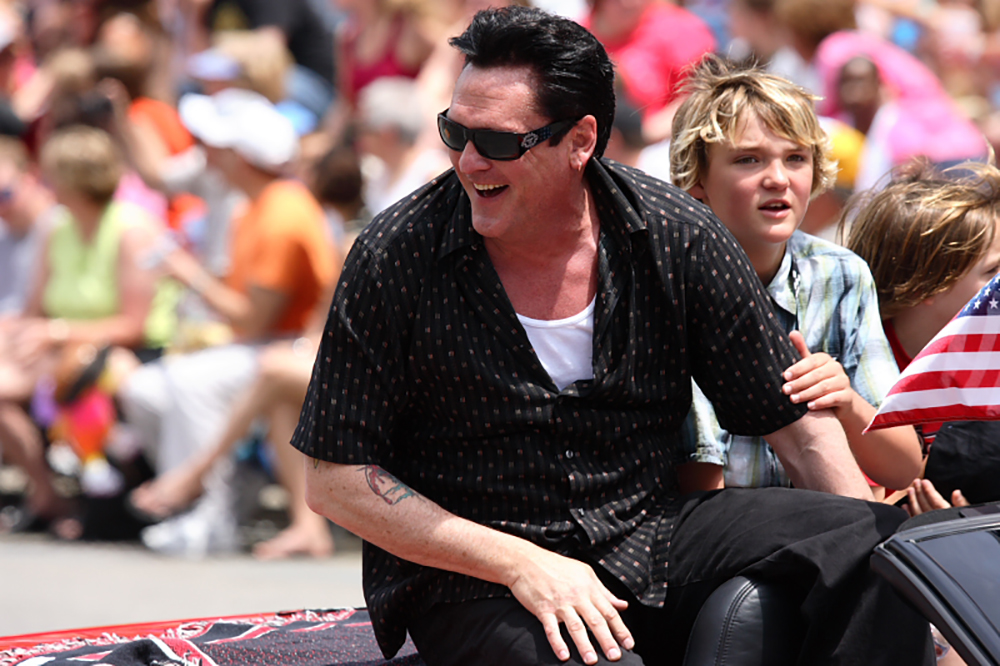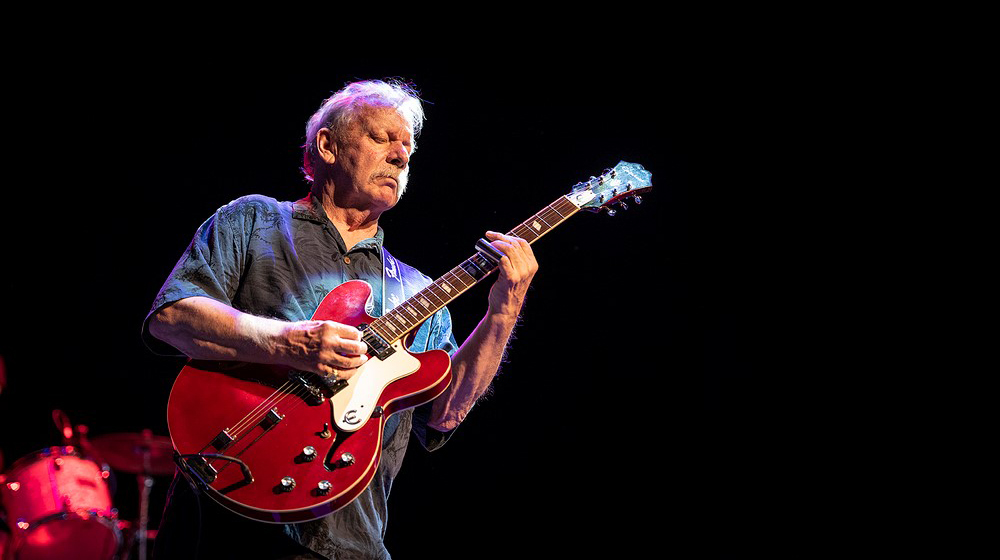This week In the Hot Seat with Larry LeBlanc: Alison Brown Co-founder, president of Compass Records Group.
Grammy-winning musician Alison Brown works 36-hour days.
That is the only way to explain the Compass Records Group co-founder’s prodigious output as a label executive with her husband, bassist Garry West; as a producer; as an artist– one of the finest banjo players alive–with 12 albums; and her significant touring with the Alison Brown Quartet, the First Ladies of Bluegrass, and with Steve Martin and Martin Short.
Did I mention that Brown and West have two children?
In 1991, the International Bluegrass Music Association named Brown banjo player of the year. In 2001, she shared a Grammy Award for Best Country Instrumental Performance for “Leaving Cottondale” from her “Fair Weather” album on Compass.
In 1993, Brown and West started their own record label Small World Music on their living room table. This company eventually led to the launch of Compass Records in 1995.
Operating from the former Music Row offices of the Glaser Brothers in Nashville where Waylon Jennings, Willie Nelson, and friends kicked off country music’s outlaw movement, Compass Records Group possesses over 600 folk, Celtic, bluegrass, Americana, adult pop, and jazz titles in its catalog.
Its diverse artist roster includes not only Brown herself but also Colin Hay, Molly Tuttle, Missy Raines, Frank Solivan and Dirty Kitchen, Michael Cleveland, Special Consensus, Mike Farris, Cecilia Noël, Bobby Osborne, Claire Lynch, Mountain Heart, the Tannahill Weavers, the Waifs, and many, many others.
The Compass Records Group is also home to two key Irish catalogs, Green Linnet and Mulligan Records.
Still, earlier in her life, a musical career seemed far-fetched to Brown, who had played the Grand Ole Opry at 16; prior to her working three years with Alison Krauss and Union Station; and as bandleader for Michelle Shocked, which enabled her and West–a sought-after record producer and session player who had worked with Patty Loveless and Delbert McClinton–to float the idea of starting a record label together.
Brown’s world up until Krauss called was within academia, guided by a ferocious focus on high-stakes business.
She had graduated from Harvard University, where she had studied history and literature; had earned an M.B.A. from the UCLA School of Management, and had worked for two years as a bonds buyer in San Francisco.
All the time, no doubt, learning how to master 36-hour workdays.
Is it true that in 1992 while in a Stockholm café, you and Garry first outlined the structure of a record label together on a napkin while on tour with Michelle Shocked? Drawing the rim of a wheel, and writing down record label, touring band, publishing, management, and recording studio along the radiating lines? Is that true?
Yes. That’s true. We really did that. It’s interesting because when I look at it I think the thing about this kind of business is that you have to be multi-pronged. Whether you are going to be an artist or even a business person, you need to be thinking about having your hands in a lot of different things. Not just one thing. If you are going to be an investment banker that specializes in tax-exempt bonds, that’s what you do. But, if you are going to make a livelihood in roots music, then you need to think in a more 360 way. So, when we sketched that out, that is kind of what we were looking at. Start a label, but have a studio, have a touring band, have a family, have a publishing concern, etc.
How do you balance the world of being an artist, label executive, touring musician, and then producing many of the label’s acts? This year you have two Best Bluegrass Album Grammy nominations as a producer: Missy Raines’ “Royal Traveller” and Frank Solivan and Dirty Kitchens’ “If You Can’t Stand The Heat.” Also nominated is Compass artist Michael Cleveland’s “Tall Fiddler.” This is your 6th and 7th Grammy nomination as a producer. That is super cool.
That is super cool. Ten years ago I didn’t think of myself as someone who should be producing records at all. It just gradually started happening because we have this incredible legacy studio right in our office. People are coming in, “Well, let’s just produce it.” Then I kind of realized that after having done my own records that I was able to offer some guidance. It has become a big piece of what I do.
(Henryville, Kentucky-native Michael Cleveland won Best Bluegrass Album of the Year for his album “Tall Fiddler.” This was Cleveland’s second nomination, his album “Fiddler’s Dream” was nominated in 2017. He accepted his trophy during the Grammy Awards Premiere Ceremony, which took place leading up to the awards show on Sunday (Jan. 26th, 2020).
What size staff do you operate with?
We have 10 full-time. We have publicity, marketing, social media marketing, retail, production, shipping and so on.
Under the Compass umbrella there are such services as retail sales and marketing; digital distribution; press and radio servicing, and tracking; tour promotion; synch pitching; brand partnerships; publishing; A&R; and merchandise creation, and marketing. Compass does offer a lot of additional artist benefit services.
Yeah. As far as the label side of things goes, we are a full-service label in the traditional sense. We have in-house publicity and digital marketing, radio and sales and all of that stuff. All of the things that a label has traditionally done.
There’s an abundance of bluegrass shows on the internet including WorldWideBluegrass.com; as well as radio networks like Bluegrass Radio Network with 138 affiliates, and Into The Blues radio syndication airing weekly on more than 130 affiliated commercial radio stations. There’s also airplay opportunities on regional NPR stations and its national “Mountain Stage” program. Significantly, however, there’s SiriusXM Radio’s Bluegrass Junction one of the original XM channels launched in 2001. So you have considerable airplay opportunities for promoting bluegrass?
Yes, you are right there are a lot of specialty shows on public community stations, college stations, and public radio stations that play bluegrass music. You are not going to get a lot of spins each week, but the fans they know where to look for it. We still service a lot of promos to radio. A lot of hard copies. This is something that is really different from other genres. That’s how they need to receive it (music) in order to play it. Half of our music is up on AirplayDirect because we want to do it that way too, but we find that a lot of DJs are still requesting physical copies.
The big mouthpiece is SiriusXM’s Bluegrass Junction, Kyle Cantrell’s show. That is a hugely important outlet for us. Not only for the exposure but also because it’s satellite radio which is a revenue generator for us. I can’t overexplain how significant that is. Just for bluegrass as a genre as a whole for us.
When I check the Billboard Bluegrass chart or the weekly Bluegrass Today chart and Spotify’s bluegrass playlist I find tracks that I’d hardly consider to be bluegrass.
It is interesting trying to make the connection between what the bluegrass fans at the core call bluegrass, and if you look at the Billboard chart for the top-charting records in the bluegrass format. Some of those records, no doubt, core fans will say, “Well, that ain’t bluegrass.” It’s that age-old thing. To me, I don’t care. Anything that makes music stronger is a positive thing. Obviously, we are trying to get our artists playlisted working closely with the DSPs. At Spotify, if you do a search for Indie Bluegrass, which I think might be the biggest playlist for bluegrass, you will see a lot of records that aren’t really bluegrass because who’s curating? I did the keynote address at IBMA (the International Bluegrass Music Association conference) in September (2019) and I think a lot of people that have been in this business a long time would not like to migrate into the digital space. I think (they want the genre) to stay the way it was. My point was the horse has left the barn. Streaming is not going away and if people in our world realize how convenient it is, it is only going to get more and more of a foothold with our demographic which is ultimately going to be a positive thing. I think that the community needs to participate in that platform, and by doing so, make the playlists more relevant to what we want to hear. Right now, there’s a little bit of a disconnect, not to mention at Spotify, and that if you want to draw this (bluegrass) demographic, we have to have the right stuff for them when they come. If the first track on the bluegrass playlist doesn’t fall within three shades of the (bluegrass) definition, you are going to have that disconnect. But we are seeing that change.
The bluegrass genre generally falls under the umbrella of Americana or folk music and continues to struggle with its identity. These are, perhaps, second cousins.
That is true that it falls under the umbrella of Americana. We have had some bluegrass records do pretty well on the Americana chart and they aren’t core bluegrass records. For example, Rob Ickes and Trey Hensley’s new record “World Fill of Blues” is not a bluegrass record but both those guys are known in bluegrass circles. The new record has made it onto the Top 20 of the Americana (Music Association) chart (currently at #18) and is moving up So that’s been a real positive thing. A band like Special Consensus (founded in 1975) which is very much a middle-of-the-road bluegrass group–I have produced their last five records so I know them pretty intimately at this point—that (their album “Long I Ride”) would not be an Americana chart record. It is right down the middle-of-the-road for Kyle Cantrell’s Bluegrass Junction. It gets lot of airplay there and then the specialty shows. So I don’t really feel that kind of music is competing for space because it’s such a niché.
How about airplay overseas for bluegrass?
BBC2 is probably the main target for much of what we do. In Ireland, there’s a little more national support. If we put out an Altan record we will get a lot of love. It really depends. Bluegrass is one part of what we do. With artists like Molly Tuttle and Colin Hay, radio opportunities become a lot broader. Yeah, the BBC shows.
Two events that transformed Compass was the acquisitions of the Green Linnet catalog in 2006, and then two years later acquiring the seminal Mulligan Records catalog, making Compass a pivotal player in Celtic and roots music. In my mind the relationship between Celtic and bluegrass is direct, and the bonds are quite strong.
Yes. They are musical cousins for sure. That’s what we discovered for sure. Our Celtic connection came about through touring over in the UK. and Ireland, and getting to know a lot of those artists over there. A lot of them were dissatisfied with Green Linnet, and were disillusioned and were looking for another way to get their music out in North America. So we started picking up a lot of those records through license deals. Then we had a lot of the Green Linnet artists that were still active on Compass. A lot of them were like, “We really want you to buy Green Linnet. We really want it to go to people who get it and who are music people. Not just a catalog company or whatever.” That really helped to facilitate that deal.
Founded by Lisa Null and Patrick Sky in 1973, and first based in New Canaan, Connecticut, Green Linnet’s catalog consists of over 200 recordings from such key artists as Niamh Parsons, Martin Hayes and Dennis Cahill, Altan, Eileen Ivers, Cherish The Ladies, Kevin Burke, Old Blind Dogs, Patrick Street, and the Tannahill Weavers. Mulligan Records, co-founded by Dónal Lunny in 1975, was briefly one of the most important Irish independent labels with releases by the Bothy Band, Andy Irvine & Paul Brady, the Boomtown Rats, and Matt Molloy.
And promoting Celtic music on American radio?
It is very much like bluegrass except that we don’t have a SiriusXM Celtic Junction. I wish that we did. It’s the specialty shows (at college, community and public radio).. Some of them are pretty important tastemakers like WFUV (Fordham University) has a show “Ceol na nGael” (“Music of the Irish”) that really moves the needle in the New York market.
(“Ceol na nGael” was launched by two Fordham students, Gerry Murphy and Mary Maguire in 1974. Over the years it has continued to be hosted by students who have kept the Irish music tradition alive at WFUV on Sundays between 12 noon and 4 p.m.)
Bluegrass Unlimited remains widely recognized as the premier magazine for bluegrass music in America, but there’s also Bluegrass Today, and the Americana Music Magazine that also has bluegrass coverage as well. Also, there’s local coverage wherever an artist is performing.
Print is still important. We are though finding that fan taste in social media advertising, and promotion is probably the tip of the arrow for us. We still look to Bluegrass Unlimited (first published in 1966). Thank heavens those guys are still there.
YouTube has increasingly evolved into a key marketing tool for artists of all genres.
YouTube is the #1 discovery source for music so I’ve heard. Even with a bluegrass record, we are looking to have a couple of videos. People are just expecting that. Pretty much every record we release, no matter what the genre, whether bluegrass or a Celtic record or more of an indie alternative-leaning act like Laura Cortese & The Dance Cards or A.J. Croce or Colin Hay, whatever it is, having video assets of at least two or three or more (videos) is important. You really have to have that because we are just finding people who just can’t listen to music anymore. They need to see music.
You and Garry launched Compass on the eve of the recording industry being the first media sector to feel the full impact of the Internet, and as technology-empowered consumers embraced piracy of music on digital platforms; prior to on-demand subscription services and new partners arriving. What a chaotic time to start an entertainment entity.
Yeah, but as the luck would have it, I kind of feel like it was at the end of the window where you could start a record company, and have a prayer of succeeding without any prior experience about what it was to be a record company. Actually set up distribution, and get distribution for a catalog of 6 eclectic Australian world music titles. Like, “What, we did that?” But the window was still open for that. I don’t think that you could do that anymore.
What was the first title?
The first release was “Bloodwood: The Art of the Didjeridu,” and it was an album by this incredible didjeridu (also spelled didgeridoo or didjeridoo) player Alan Darkin (and Michael Atherton). So he was our first release. It was like, “Hey, I have an idea. Let’s start a record label, and the first thing that we will do is put out a didjeridu record.” But honestly we were thinking if people buy expansion music then it couldn’t be that hard to expect to find didjeridu music. At the time there were nature company stores all over the States. So there was an obvious place to market that kind of thing.
(Following five albums, indigenous Australian musician and songwriter Alan Dargin, known as the inventor of “Rock and Roll Didjeridu,” was diagnosed with burst veins in his throat, and was warned by doctors that continued aggressive playing of the didjeridu could endanger his life. In mid-February, 2008 he was admitted to Saint Vincent’s Hospital, Darlinghurst, and died of a cerebral hemorrhage on Feb. 24th, 2008.)
Bob Feldman, founder of Red House Records in St. Paul, Minnesota—an American roots music institution–proved to be a mentor to you and Garry. You met him at a conference in 1995 and were taken by his willingness to share his knowledge of the business. Over the next decade, a mentoring relationship evolved into a mutual friendship. Bob certainly proved with Red House that a great roots music label could flourish. So an invaluable counselor?
In every way. Bob was the only guy, when we were trying to figure out, “Really, how does this work, what kind of distribution fees should we be paying?” He was the only guy who’d give it to us straight. Nobody else would tell us. Bob was just such a mensch. He was just a great guy.
(After Bob Feldman saw Iowa singer/songwriter Greg Brown perform In 1983 he re-launched Red House Records, Brown’s dormant label, and re-issued the artist’s album “The Iowa Waltz.” Over the years, Feldman released nearly 200 albums including works by such seminal urban folk artists as John Gorka, the Wailin’ Jennys, Ray Bonneville, Guy Davis, Bill Staines, Claudia Schmidt, Kate MacKenzie, Chuck Brodsky, and the Chenille Sisters; stellar instrumentalists, such as Peter Ostroushko. and Dean Magraw; and such respected veteran performers as Paul Geremia, “Spider” John Koerner, Utah Phillips, Eliza Gilkyson, Lucy Kaplansky, Robin, and Linda Williams, Loudon Wainwright III, Cliff Eberhardt, The Cactus Blossoms, Larry Campbell, Rosalie Sorrels, and Ramblin’ Jack Elliott.
After Feldman’s untimely passing on January 11th, 2006, after a brief illness, at the age of 56, the label continued under his wife Beth, and long-time Red House executive Eric Peltoniemi. Signings included former Jefferson Airplane guitarist Jorma Kaukonen; alt-folk artists the Pines and Pieta Brown; and singer/songwriters Danny Schmidt, Meg Hutchinson, and Heather Masse; and R&B stalwart Willie Murphy.)
In 2017, Compass purchased Red House Records leading to its office in St. Paul closing down.
We always fantasized when it was time for Bob to get out of the business, and then later when it was time for Beth to get out of the business, we’d love to be the ones to carry the flag forward. So that (acquisition) really means a lot to us.
Compass came along as music-based experiences were becoming effectively delivered in an assortment of connected ways with the arrival of new types of online music outlets, including download stores; on-demand and cloud-based streaming services; video-sharing sites; and Internet radio.
Well, it worked out. There was room for two people who really didn’t know what they were doing to make it work. It was interesting too because it was right at the time of DIY labels were starting up. So Ani DiFranco’s label Righteous Babe Records (launched in 1990) or Acoustic Disc (founded by in 1990), David Grisman’s label.
For years the sole business guide for independent music was Diane Sward Rapaport’s breakthrough book “How to Make and Sell Your Own Recording” in 1979, which provided a detailed blueprint of starting a record company independently. The book, five editions later, has since sold over 250,000 copies. Bob Feldman and indie artists like Ani DiFranco in the U.S. and Raffi and Loreena McKennitt in Canada were among those who followed the book’s blueprint to launch labels.
(To figure out how to run a record label, Bob Feldman went to the library. “I found this book called ‘How to Make and Sell Your Own Record’ and I read it like it was a textbook,” he told the Minneapolis Star-Tribune in 1994.)
I’m going to find it on Amazon right now. It will be interesting to read. There’s still probably some good wisdom there even though things have changed as much as they have.
To start a label today anyone can do research on the internet. Back when you and Garry were starting there wasn’t much available to find out about how to set up, and distribute a label.
That’s why Bob was so great. We knew a bit about being on a label, being able to see what it was like from an artist’s perspective, but actually, how do you get records into stores? When we started you had to sell to 7 different distributors to cover the U.S.
You also had to get paid by the distributors. You had to have continual product flow in order to be paid.
Well, it was better because at least they paid you on invoice. But you are right about product flow. Nobody is going to pay you unless you have product flow.
Well, back then, physical music stores could only return 15% of shipments from the majors and large indies, but smaller indies were not quite as fortunate. Often goods were ordered, and if unsold, were fully returned for a 100% credit.
Well, we got into the business before it was 100% consignment which was interesting but we were in it too deep when it switched which is also very fortuitous because that really killed a lot of little labels.
While the mainstream recording industry imploded in the mid-’90s, it didn’t immediately affect such niché genres as Americana, blues, folk, Celtic, heavy metal or bluegrass. Shortly afterward, CD sales plummeted across the board, and physical retail began to largely disappear. At that point, however, an artist in those genres could still sell CDs on tour and significantly to retail music chains like Waterloo Records in Texas, Bull Moose Music in Maine, and Newbury Comics in Massachusetts.
We still had Tower Records (until 2006). That was huge. Have you seen the Tower Record documentary “All Things Must Pass” (The 2015 Colin Hanks documentary chronicling the rise and fall of Tower Records)? We saw it 6 months ago and it was like, “Okay, now I remember why it seemed like it was a good idea to start a record label. There were actually stores that sold music.” It’s crazy to look at it now through the eyes and the knowledge that we have now. It’s worth watching.
The internet is nothing less than a big fishbowl music world today.
What we have available at our fingertips is just mind-boggling. There’s just so much out there that you can use as a reference point. I think about when you used to have to make a trip down to Tower Records and find music. It used to be such an effort to find stuff, and now it’s anything that you think of you can find instantly. That’s really remarkable. It will be interesting to see how music evolves away from genres.
During the past decade if there were cracks within a small independent company then it was likely doomed. Those who had good businesses flourished.
Then there were those pioneering indie folk and blues label players who decided to sell.
Like Canada’s Bernie Finkelstein selling True North Records to Linus Entertainment in 2007; Barry Poss selling Sugar Hill Records to Welk Music Group in 2008; Ken Irwin, Bill Nowlin and Marian Leighton Levy selling to Rounder Records to Concord Music Group in 2014; and El Cerrito’s Arhoolie Records, founded by Chris Strachwitz in the early ’60s, being acquired by Smithsonian Folkways in 2018. You really had to be a dedicated and motivated business person to have sustained a business over the past 15 years…
Yeah, I think that’s true. I remember the first 10 years of the company, you’d see a lot of labels start up. They were started by musicians and, on some level, it doesn’t matter that you are selling music because you apply the same disciplines that you’d apply to selling refrigerators or any other product. You have to know what your receivables and payables are. It doesn’t matter what your product is. That is kind of the unfun part of it. So for a lot of people who come to this business, because they are musicians, and they want to deal in music, if they don’t have those chops, definitely it may not go well; which is one reason why I think about people wanting to be DIY artists, and put out their own records, and I’m like, “Yeah, you can do that, but it’s really hard to be both an artist, and a person that is dealing with that (business side), having the discipline to know what your receivables and payables are. I am never kind of sure why people want to encumber themself with that responsibility.
Artists in the ‘90s were able to sell their CDs on tour for $20.
Well, we are still in that game. We still work with artists that count on that money.
That’s a tough environment.
It is, and it isn’t. I am really glad they do because otherwise, we would be manufacturing physical product just to feed a declining retail system so it’s great for the balance sheet to have another outlet for physical product. We really do think of these venues as the new retailers for that reason. To feed the retail system you still need physical product, but the artist has to absolutely have it for touring, and that’s great because there are manufacturing minimums to get parts and all of that. In the bluegrass world, and I’d say the folk work world in general way, people come to the show, and they want something to take away. Maybe they will buy a T-shirt too, but it’s easiest to sign a CD. You can’t sign a download.
Sure an artist can release their own recordings but how do they on their own find the time and knowledge to also be a marketer, a distributor, a manager, a music publisher, and a booking agent?
I agree. I think that teamwork makes the team work. There are people who are experts at certain things. I don’t know why you wouldn’t want to partner with them and use their expertise to help lift up the art that you are trying to lift up. So I completely agree.
I’m astounded how so many artists and songwriters today know little about the workings of their own careers. I’m continually hounding artists and newbie managers to read the music industry’s essential legal guides: Todd and Jeff Brabec’s” Money And Success: The Insider’s Guide to Making Money in the Music Business”; and Donald Passman’s “All You Need To Know About The Music Business.”
Yeah, I hear you. It’s a double-edged sword (being an artist handling business), and I don’t disagree with you. I think you need to understand how your business works so you are not taken advantage of. But, at the same time, and I find for myself, it can be a real impediment to creativity if you know too much. If you know too much about the challenges in the marketing place or the saturations of the marketplace, then how do you justify creating more music when there’s so much abundance of it already? All of the great music that has been made up until now most of it is readily available to people on their phone. How do you justify the investment in creating more? So there’s that side of it.
Artists are always asking me if they should record a full album? If they are a pop artist, probably not. Maybe release just a single or an EP. Those artists working in jazz, and hip hop, well maybe not too. Niché genres like bluegrass, folk, heavy metal, worldbeat, and Celtic have such defined international fan bases that are likely receptive to new albums.
Yeah, that’s pretty interesting. I think that there is still a good market for folk music. Folk, to me, is a lot of things. It’s bluegrass, Celtic, and also singer/songwriter. Ten years ago house concerts weren’t as much of the scene as they are now. That is a legitimate part of the scene now, where you can go in and make a lot of money. Take all of the money off the door whatever, and sell a lot of product. There are some good gigs. I don’t know. None of it is easy, but it is so viable.
Why so long between your own recordings? From “The Company You Keep” in 2009 to “The Song Of The Banjo” was 6 years, and it’s now four years later. We are waiting.
I know. I am working on an album. It’s that challenge. When I produce an album I really talk to the artist about design and outcome. What do you want to have be the end result of going through this effort in making a record because just like you said, maybe you just need a single Why do you need to 10 tracks? Maybe, you just need to do three tracks. If it’s me, it’s like if I am going to make that investment of time, and resources, I need to know what I’m going to get out of it.
Also, you seem to seek to have each recording to be distinct. Like “The Song Of The Banjo,” which was inspired by the poem of the same name by Rudyard Kipling,” you described as, “It points to the lyrical side of the banjo, which is the side I’m drawn to.” You seem to put a lot of thought into the planning of your recordings, and then immense care in the production.
From your lips to God on that (laughing). I think that a lot of it comes from the fact that I am the one crunching the numbers, and we are all talking about the challenges in the market, so like I was saying before, how do you juggle that with the creativity? How do you keep that from making you feel like you shouldn’t really do something unless it is going to be really special? That’s the way I feel about it now. So yes I am working on a new record. In fact, I recorded a couple of tracks last weekend. I’m going to somehow have it out this year. That’s my goal. But it can’t just be10 tunes. To me, each one has to accomplish specific goals. I’ve got a choreo-influenced song that I wrote for classical guitarist Sharon Isbin that we are going to do together. We share the same birthday so I’m thinking I’ll call it “Regalito.” I am going to also collaborate with Kronos String Quartet, and I have a few bluegrass collaborations in mind. So to me, it’s like each thing has to have a real reason for being there. I used to feel with a record that you start on track one, and you keep a listener in a mood, like a sonic space, for 10 tracks. I just don’t feel that way anymore which, in many ways, is very liberating. If you think of each track on the record can have a different use than it can be slotted for a different playlist or a different radio format. The thing has been broken down so much that in some ways there’s a lot of creative freedom as a result.
Two of the most memorable tracks on “The Song of the Banjo” are incredibly inspired instrumental renditions: Cyndi Lauper’s “Time After Time,” perhaps one of the best love songs of all time, and Chuck Mangione’s 1977 hit single “Feels So Good,” the latter with the amazing American ukulele virtuoso Jake Shimabukuro. Neither track would I expect from a banjo player.
Thank you for saying that. That was the whole goal of that record, the point that we were trying to make was that the banjo is incredibly versatile, and can be used in a lot of different contexts. What we’ve come to realize after playing for a lot of different people is that sometimes people can’t hear the melody in a banjo roll. So if you play a tune that people know, they are like, “Okay now I can hear what it is doing is different,” but a lot of times people can’t.
Bluegrass history is marked by peaks and valleys of popularity since Bill Monroe and the Bluegrass Boys, with Earl Scruggs’ banjo at the center, pioneered the genre in the late ‘40s followed by Flatt & Scruggs, the Stanley Brothers, Reno and Smiley, Jim & Jesse, and the Osborne Brothers.
This heyday was followed in the ‘60s and ‘70s and ‘80s by the Seldom Scene, John Hartford, Tony Rice, New Grass Revival, Ricky Skaggs, David Grisman, Clarence White, Sam Bush, Peter Rowan, Jerry Douglas, and Bill Keith.
Then Béla Fleck and the Flecktones, Larry Sparks, Del McCoury, Alison Krauss, Abigail Washington, Rhonda Vincent, Nickel. Creek, and yourself..
More recently there’s again another resurgence in bluegrass with Rhiannon Giddens, Molly Tuttle, Michael Cleveland & Flamekeeper, Frank Solivan & Dirty Kitchen, the Dead South and others. This genre is like a river in that it keeps flowing and branching off and getting stronger.
That’s an interesting perception because there is always the fear of the core of the music it’s getting diluted or somehow the flame of the music is dimming as the edges get blurred. I glad you said that. I perceive it the same way. The music, from its core, has influenced so many people on the fringes, and the fringes keep continuing to expand. I think that is a very positive thing.
Bill Monroe, who helped lay the foundation of country music as the universally recognized father of bluegrass named after his band, the Blue Grass Boys, perfected his music in the late 1940s, and stubbornly maintained it.
Absolutely.
That prejudice toward outsiders has long been an aspect of bluegrass. Bill Monroe was invited to be a part of the Nitty Gritty Dirt Band’s 1972 triple album, “Will the Circle Be Unbroken,” and he refused. Some say it was because there was “too much long hair involvement.” Others say he thought they were trying to mix bluegrass with electric rock; while others say he objected to other musicians copying his style with more commercial success than he was having at the time. Many bluegrass and old-timey music legends played on the project including Earl and Randy Scruggs, Jimmy Martin, Mother Maybelle Carter, Merle Travis, Roy Acuff, Vassar Clements, Doc Watson, Norman Blake, and others.
Interestingly, Earl Scruggs bristled under the restrictions of classic bluegrass fare. His sons were fellow musicians, and he became caught up in their enthusiasm for more contemporary music. The Earl Scruggs Revue appeared alongside such acts as The Byrds and James Taylor. Earl’s 1972 album “I Saw the Light with a Little Help from my Friends,” featured Linda Ronstadt, Arlo Guthrie, Tracy Nelson, and the Nitty Gritty Dirt Band which were inspired to try to make “Will the Circle be Unbroken.” Earl and Louise Scruggs made phone calls to people like Roy Acuff and “Mother” Maybelle Carter to get them to participate in the project. He did an enormous amount to promote genre-jumping while still adhering to his music and background.
Yes. That’s interesting. I don’t know if that isn’t something about banjo players just having that kind of open-mindedness. Of course, Earl was kind of at the point of the spear in creating that kind of banjo playing. He didn’t create a style of music. It was a style of playing. Maybe that gave him more latitude to expand that. But I find that a lot of banjo players do push the music envelope. Banjo has such a long history on our shores back to the 1700s, and probably before that.
(As a child, Earl Scruggs invented a new way of playing the five-string banjo. The Earl Scruggs’ banjo style consists of playing ‘roll’ patterns with the thumb and first two fingers of the right hand, often called three finger picking. One of his innovations was introducing finger picks to allow players to play with more precision, speed, and power than the bare finger or fingernail used by classical players.)
Maybe Earl saw himself as part of a fraternity of banjo that extended hundreds of years before he had the instrument in his hand; whereas Bill was the creator of a specific thing that he was more protective of.
(A quick history about the modern banjo. It originated in West Africa with handmade gourd instruments including the ngoni, the xalam, or the akonting that looks like a banjo. African slaves then brought the instruments and their music to the Caribbean and America. Traditional string music and the banjo were appropriated from the slaves in America and spread into the greater American popular culture through minstrel shows and other sources. Various regional playing styles emerged and evolved simultaneously, including in jazz in New Orleans, and the fingerpicking sound of bluegrass in the Appalachian mountains. You can also find early versions of the banjo in the Far East and Middle East.)
The five-string Classical banjo was very popular in the late 1800s and early 1900s and many pieces of music and 78rpm records survive from this time.
I’ve read that it was America’s most popular instrument at the end of the 1800s that more people played banjo than anything else. Kind of the way that people play guitar today.
I’ll bet that they didn’t play Scruggs’ three-finger banjo style…
No. They absolutely didn’t. They played Classic style though. Or the “stroke” style. There are people who know far more about that than I do, but I find it really fascinating because at the same time it was considered to be a woman’s instrument. Clearly, as the banjo became known more in bluegrass, maybe, it kind of the rise of clear channel radio and the later network TV, the women attachment of that of really took a sideline. But there are lots of old pictures that you can find of women playing the banjo. It was considered to be a very demure instrument for a young Victorian woman to play.
I recall Emmylou Harris being asked about what country music was, and she said, “If it sounds country, then it’s country.” So, to me, if it sounds bluegrass… I recall Dolly Parton being slammed in the ‘90s when she released her all-bluegrass albums, “The Grass Is Blue” (1999) and “Little Sparrow” (2000) because detractors said the music wasn’t bluegrass. Today, those two albums are regarded as two of the top bluegrass albums ever made. Of course, Dolly’s 1970 recording of Bill Monroe’s “Muleskinner Blues” reached #3 on Billboard’s country chart. Dolly and Bill Monroe, in fact, performed the song together on the 1978 CBS television special “Fifty Years of Country.” So Dolly not being bluegrass? Dolly records bluegrass, she’s bluegrass.
Yeah, right. I know. I’m with you.
Did you face prejudice at the beginning of your career of, “Who are you to be playing this type of music?”
Ah, well that is an interesting question and before I attempt to answer it, when you made that comment about Bill Monroe I was just thinking that there was absolutely no love lost between Bill Monroe, and New Grass Revival too, and look how much Sam Bush and the group influenced the current direction.
New Grass Revival broke from bluegrass tradition, and there were some who thought it wasn’t the way Bill Monroe meant for bluegrass to be played.
(Laughing) So I grew up playing bluegrass in California in the ‘70s. So the words ‘”70s and California,” you know.
Use of Flatt & Scruggs and the Foggy Mountain Boys 1949 recording of “Foggy Mountain Breakdown” in the 1967 American film “Bonnie and Clyde,” starring Warren Beatty and Faye Dunaway, made Flatt & Scruggs beloved to a generation, including you. That’s where the light turned on for you?
Yeah, absolutely. You are absolutely right about that about me, and for people of my generation, that is definitely true. Now it is more likely to be hearing who knows what? It could be Mumford (& Sons) or it could be Béla Fleck and the Flecktones that bring people into the music. I think that is what is making the music so grow in such a robust way on the fringes. I completely agree with what you started with. It’s very exciting to me.
You started off playing at age 10, taking guitar lessons in Stanford, Connecticut?
I was probably closer to 8 ½. I remember my parents had taken their first trip as parents with no kids. I was 8 and my sister was 6 and we had a cousin that stayed with us who taught me some guitar chords. There were a couple of guitars around the house. That was my first thing. Luckily I had a guitar teacher, who was also a banjo player, and he’s the one who brought over the Lester Flatt and Earl Scruggs and the Foggy Mountain Boys’ “Foggy Mountain Banjo” (1961) record.
Both your parents, John and Barbara, are lawyers.
They are. Yes, they are still practicing.
It must have been a considerable adjustment for you when the family moved from Stanford, Connecticut to California in 1974. How old were you?
I had turned 12. I started middle school in La Jolla, California. Yeah, it was a huge change. It was a really positive thing. I remember when we moved thinking, “There’s no way that there’s going to be any banjo players or bluegrass music in California.” How wrong could I be? I’ve talked to some people about it, and they say it’s because the Okies came in the ‘30s, and brought their love of country music. There’s a huge amount of Southern music in Southern California, and there tons of banjo contests. Not a ton of bluegrass festivals, but there was a whole folk scene that was happening in the ‘70s in L.A. I got a chance to play at The Troubadour the Ice House, the Palomino Club, and McCabe’s (Guitar Shop). That whole folk scene was vibrant then.
(A series of wet years in the 1920s led farmers to believe that the American Plains could sustain annual plowing to produce wheat. Drought in the 1930s allowed dust storms to carry away topsoil, darkening the sky even at mid-day. Farmers from the Midwestern Dust Bowl states, especially Oklahoma and Arkansas, began to move to California. Some 2.5 million people left the Plains states, many hoping to become hired hands on California farms but California farms typically hired seasonal workers only when they were needed. The experiences of Okies and Arkies were detailed in John Steinbeck’s 1939 novel, “The Grapes of Wrath.”)
One of the hotspots in La Jolla was Shakey’s Pizza Parlor where you headlined from time to time.
Yes, Shakey’s Pizza most definitely plays in every California bluegrass player’s history. So I think because of the result of the geographic placement, and the time that the attitudes about what was appropriate for bluegrass were more relaxed in California. It was super-common for an Eagles’ tune or a country-rock tune to find a place in a bluegrass band’s repertoire. When I started playing with bands, especially in the southeast where the music came from, people tend to have a stricter attitude toward what is bluegrass and what isn’t.
You found a partner in Stuart Duncan when you were 12. He was 10.
Stuart was a fiddle prodigy. We met at the Shakey’s Pizza Palace at a meeting of the San Diego Bluegrass Club. I’ll never forget him playing (fiddler) Paul Warren’s solo on “Earl’s Breakdown” note for note. Obviously, he was the guy that made everybody’s jaws drop to floor whenever he played anything.
Stuart continues to amaze people He has recorded with the likes of Yo-Yo Ma, George Strait, Dolly Parton, Guy Clark, Reba McEntire, Shania Twain, Elvis Costello, Panic at the Disco, James Taylor. George Jones, John Prine, and Barbra Streisand. A member of the Nashville Bluegrass Band since 1985, he has toured with Mark Knopfler & Emmylou Harris, Robert Plant & Alison Krauss, and Diana Krall. Matt Glaser, longtime chair of the string department at the Berklee School of Music, called Stuart, “One of the finest, most fully realized violin players in any idiom.”
Stuart is kind of the first call for a lot of artists. He’s always doing a lot of interesting things. Yeah, that was incredible So it’s amazing to be able to have a peek to be able to watch the evolution of a musician like that.
Chauffeured by Stuart’s father, you two crisscrossed Southern California competing in banjo-fiddle contests and pocketing the prize money more often than not.
One summer his dad, who was a retired Marine, drove us around the festivals back East and let us pick out where we wanted to go from the pages of Bluegrass Unlimited magazine. He would drive us overnight on a Saturday night so we could hit a second festival on Sunday. He was incredibly dedicated. One of the places that we really wanted to go to was Hugo, Oklahoma because they had a big banjo/fiddle contest (the Bill Grant Bluegrass Festival), and they had a lot of bands that we really wanted to see.
(The Bill Grant Bluegrass Festival was launched at Hugo in 1969 by local mandolin player Bill Grant who is known for his 40-year partnership with the late singer Delia Bell. The event, later renamed the Early Bird Bluegrass Festival, and held every summer in Hugo’s Salt Creek Park, is the oldest festival of its kind west of the Mississippi River. Grant passed away in 2019 after a brief confinement to hospital following a fall that had resulted in a fractured leg.)
I remember that we played a version of “Nick’s Noodle” which we learned off of a (American violinist) Richard Greene record (“Duets” in 1977) which is sort of a super cool kind of groove, funky fiddle tune thing and I clearly remember some audience member coming up to us afterward and telling us that he did appreciate us mocking the music. That was, maybe, the first time that I had some kind of direct interaction with somebody with that mindset. Generally speaking, California wasn‘t like that.
Two teenage bluegrass musicians touring North America together. Is that how you came to play the Grand Ole Opry at 16?
Yes, exactly. That was part of that trip where Stuart’s dad was taking us around, and there were plenty of bluegrass festivals to go to. One of the things he took us to the Canadian National Banjo Championship in Durham, Ontario (just north of Toronto). We went up there, and I had the luck of winning the five-string banjo side of things. That enabled us to get a slot on the Opry. So we went and did couple of banjo/fiddle tunes. It must have been at 5 minutes before minute. I don’t know. It was the last order of business for the Opry that night. It was a huge experience.
Being both lawyers, your parents naturally expected you to follow an academic life You picked your first university influenced by the listings in Bluegrass Unlimited? True?
Yes, it’s true.
And you picked Harvard University in Cambridge, Massachusetts. Of course, The Boston/ Cambridge area was then, and still is, probably the best market for folk music in America.
I picked Cambridge, and it was a good pick on so many levels. On the first night my mom dropped me off at my freshman dorm and I couldn’t believe that Knoxville Grass (a seminal modern ‘70s bluegrass band whose driving sound influenced many groups that followed like Lonesome River Band and IIIrd Tyme Out) were playing a show at Paine Hall on the Harvard campus. Growing up, and trying to learn this music in Southern California, we might have got to see one national touring band a year. It was just too hard for bands to get out West. And to have one practically right outside my door that I had been reading about in Bluegrass Unlimited was just awesome. Then there was the Boston bluegrass scene and the Boston Area Friends of Bluegrass, the coffee house Club Passim (in the Harvard Square area of Cambridge). The Idler (also in Cambridge), I think, was still going then. Boston probably still is the best single market in the United States for bluegrass, folk and Americana music.
Of course, Rounder Records was then based in Cambridge, and with you having a folk radio show on WHRB, you’d be visiting Rounder seeking promo records.
I remember going over there to the warehouse at Rounder and picking out vinyl and taking it back.
Rounder Records was founded in 1970 in Somerville, Massachusetts by Marian Leighton Levy, Ken Irwin, and Bill Nowlin. I know Ken and Bill well. Great people.
Yes, and Marian is great too.
So you did the WHRB show.
Yes, for four years every Saturday except during football season. I think it was from 1 PM to 3 PM.
You studied history and literature at Harvard?
Yeah, I started off as pre-med, but my concentration was on history and literature because I was really interested in that stuff. Truth be told, I’d be much better served just focusing on what I was really interested in, and not trying to think about fulfilling my parents’ dreams of having a doctor in the family. It took me a few years to realize that.
Few people growing up can really see a career as a musician in the distance.
Well, that was true and also I think that it is easier to see but it’s hard for us to know how much things have changed around us in all that time. If you think back to the early 1980s I don’t know. Ricky Skaggs was kind of beginning his kind of bluegrass country music breakthrough career and David Grisman was out there and he was having some pretty good luck. But there really weren’t a lot of other people that had ever made it beyond that point.
Beyond that restricted bluegrass perimeter.
Yeah. So to have the aspiration of making a living playing this music today is much more doable than it did then. And as far as being an instrumentalist in this music that doesn’t seem like a recipe for anything but a challenging way to make a living. People have done it but I do think that there are more examples of people who done it now for younger musicians to look at then there were then.
One of the things enabling you to run the business side of Compass is that with a Harvard degree in hand, you returned to California, and enrolled at the UCLA School of Management (since renamed the Anderson School).
What do you do with a history and lit degree? There’s only one answer to the question.
With a degree from the UCLA School of Management, you most certainly can figure budgeting, and who owes the label money, and how to collect.
Well, that’s true. UCLA was pretty much a finance mindset. We were doing sophisticated financial stuff. I was completely too young to go to business school. I should have waited a couple of years but I didn’t.
Was one of your professors finance expert Thomas Copeland?
How do you know him?
He’s recognized as a leading authority on valuation. He’s written at least 6 books and published research papers on valuation, real options, stock splits, the theory of the bid-ask spread, the theory of trading volume, non-synergistic acquisition, and capital efficiency. His textbook “Financial Theory and Corporate Policy” has been in print since 1979, having been used at more than 100 universities.
He definitely was teaching there. So anyway the stuff that I was learning was sophisticated stuff. Not really useful in the music business. The good part of it was feeling comfortable with crunching numbers, and spreadsheets. All that kind of stuff.
Copeland was renowned for putting a salary cap on the blackboard and saying, “If you graduate, this is what you could be earning.”
I remember him writing $40,000. He said “This is your starting salary if you become an investment banker.” So everybody was like, “Well, okay. Investment banker it is.” And that is what I did. I am so glad that I did it, but it was completely the wrong motivation ultimately, I think, to pursue anything.
Well as a bond buyer you can talk about how to structure tax-exempt bond issues as you did at Smith Barney which also specialized in both asset management and funds along with retail brokerage.
Yes, well I did do my share of those and I am happy to say that I have forgotten completely how you run ERIN/muni debt service software 1988 or whatever it was.
You quit Smith Barney after about two years. Burnt out? Bored?
No. I just realized that it wasn’t a fit. I did work with people who were incredibly gifted at thinking up these financial structures and actually got up in the morning thinking about they were going to structure tax upon refunding or whatever I just didn’t do that. I got to thinking, “I wonder when I’m going to get to play banjo again?” And I was young enough, and the stakes were low enough to say, “Okay I will take six-month break and I will probably go back to it or something that is probably a more credible business type of job.” Just as luck would have it, every time I got to one of those forks in the road, there was another path that I could go on to take me home.
In 1989, you got a phone call from Alison Krauss that changed your life. Alison Krauss’s banjo player had just quit and she needed a replacement. You toured and recorded with Alison for three years, lending a hand on her 1990 breakthrough album “I’ve Got That Old Feeling.”
My wife Anya Wilson was apparently one of the inspirations for one of Alison’s biggest hits, “Baby, Now That I’ve Found You” in 1995. The song was co-written by Anya’s fiancée, Tony Macaulay with John MacLeod as the Foundations’ début single, reaching # 1 on the UK singles chart, and #11 on Billboard’s Hot 100 in 1967. Alison’s version won the Grammy Award for Best Female Country Vocal Performance. Anya worked Alison’s version at Canadian radio as a promo rep, and Alison acknowledged her during a Massey Hall show in Toronto by having her stand up.
What a small world. That’s funny because Shawn Colvin played that song during her set at Telluride, maybe it was 1991, and that’s when Alison first heard it. I was sitting next to Alison. We looked at each other like, “That would be cool.” So then she had great success with it.
Few things are as powerful in a musician’s tool box than collaborating with other musicians. Certainly the First Ladies of Bluegrass, you working alongside Molly Tuttle, Missy Raines, Sierra Hull and Becky Buller, is an incredible teaming of formidable ladies. You are clearly enjoying yourself in the handful of performances by pushing artistic boundaries.
First of all, this bluegrass project is really meaningful to me since I was the first of the first ladies (receiving the Bluegrass Music Association’ award for banjo playing). Everybody in the band is the first female of the instrumentals of the year awards on their instrument. For me, it’s been the longest wait to achieve that for five women who are such great players, and really like with Sierra and Molly over the last couple of years now, there is finally this really awesome rhythm section that is also all-female. So it is incredibly inspiring to me musically, but we’ve have found when we played—and we have only played a few shows together—it really is a very special project that doesn’t happen very often
Debuting in the summer of 2018 at Planet Bluegrass’s 46th annual Rocky Grass Festival in Lyons, Colorado, the First Ladies of Bluegrass have played a handful of dates and shared performance spots with Phoebe Hunt, Sally Van Meter, Yola, Brandi Carlile, Gillian Welch, Rhiannon Giddens, and others.
People, literally not exaggerating at all, have come up to us crying after seeing the band. I think that it is because it is the convergence of this band and this moment with the greater moment of what is happening in our time. The #MeToo movement, and the rise of women and all of that stuff. What does it mean? Now people are overcoming these challenges to get to these positions of greater authority and power. So it’s meaningful to me musically but also in a great social context, it seems to have a lot of meaning.
With the First Ladies of Bluegrass in the Country Music Hall of Fame “American Currents” exhibit, I could see how inspirational the individual members might be to young female bluegrass players.
Yeah, I completely agree. It turns out to be incredibly important to be role models that are relatable for you. I was talking to Vickie Vaughn, a great bass player here in Nashville (who fronts progressive bluegrass ensemble, the Vickie Vaughn Band), and she was saying, she’s maybe in her 20s, she was saying, “It was when I saw Missy Raines (named 2019 International Bluegrass Music Association Bass Player of the Year, for the 8th time, more than any other bass player in the history of the organization) play bass when I was a kid that I realized ‘Yes, I could do that too.” It’s just not the same to see some guy up there. It is not as relatable. I really feel that for the future of bluegrass music that there are female voices that are accessible voices.
While the original architects of bluegrass were primarily all men, having more women’ voices may lead to bluegrass becoming more accessible to a mainstream audience.
If we are going to draw more fans to the music than I think it is through female artists because that is so relatable for a mainstream music fan. The creators of bluegrass were all men. But I see a future that’s very female-centric. I think it’s much easier for someone not familiar with bluegrass to get drawn in by a woman’s voice. The high lonesome male vocal style has always seemed a bit like an acquired taste to me.
CMT recently acknowledged that country women had been battling for airplay, and has changed its video airplay ratio so female artists will now account for 50% of the 29 hours of video airtime played on the station. So a change is afoot.
Yes, completely. I think that is another reason for the statement the band (First Ladies of Bluegrass) makes just by existing is really important statement. Just females banding together, and inspiring another generation, and encouraging women across the ecosystem of the music industry. That’s how I look at it. It’s our moment to not only collaborate with each other, but to lift up each other, and bring along the next generation which is something that men have historically done so well. I think that women are finally reaching the tipping point where we can take a page out of that book, and do the same thing for each other.
In December (2019) you took part in a historic concert at the Bluegrass Music Hall of Fame & Museum in Owensboro, Kentucky, an all-star cast of bluegrass artists taping the special “Bluegrass Now” for PBS television. The program, to air on Feb. 29th, features performances from hosts Rhonda Vincent and Jim Lauderdale, along with Michael Cleveland & Flamekeeper, Frank Solivan & Dirty Kitchen, Molly Tuttle, Missy Raines, Dan Tyminski, Becky Buller, and the great Larry Sparks. How cool is that?
How cool is that? It’s incredibly cool. I think that when a music can have an institution like that it just bodes so well for the future. It’s a great facility and being part of that culture is…
How cool to have such an impressive line-up for the PBS show.
It was incredibly cool. There were a bunch of Compass artists too which we are really proud of. It was incredibly cool, and the program shows everything from the trade side of things to Larry Sparks on it. Molly Tuttle is right on the edge of it pushing the envelope and is carving her own path.
How great now to have a $15 million facility for bluegrass that opened in 2018. I think, will also provide a focal point for bluegrass and its followers
Right, and bluegrass has its own house.
Larry LeBlanc is widely recognized as one of the leading music industry journalists in the world. Before joining CelebrityAccess in 2008 as senior editor, he was the Canadian bureau chief of Billboard from 1991-2007 and Canadian editor of Record World from 1970-80. He was also a co-founder of the late Canadian music trade, The Record.
He has been quoted on music industry issues in hundreds of publications including Time, Forbes, and the London Times. He is a co-author of the book “Music From Far And Wide,” and a Lifetime Member of the Songwriters Hall of Fame.
He is the recipient of the 2013 Walt Grealis Special Achievement Award, recognizing individuals who have made an impact on the Canadian music industry.

